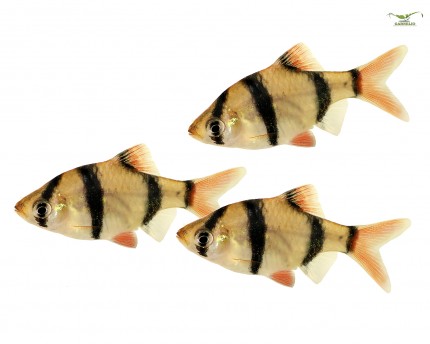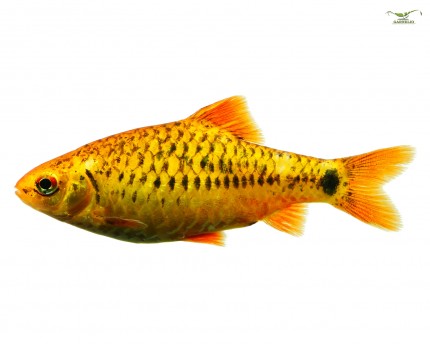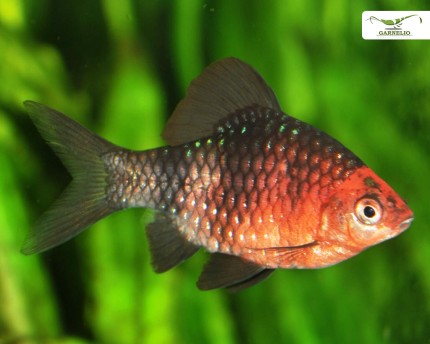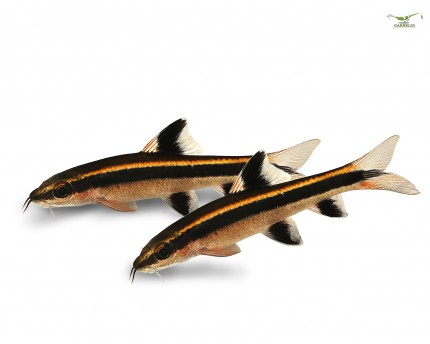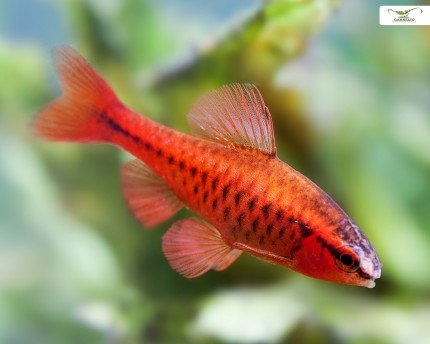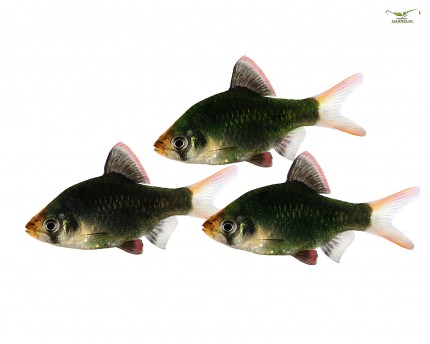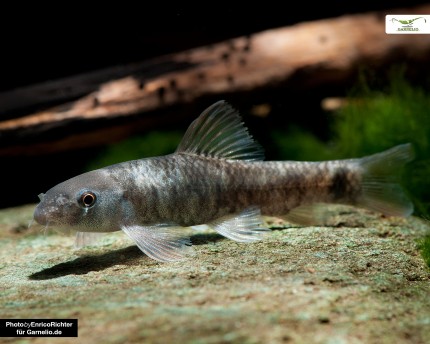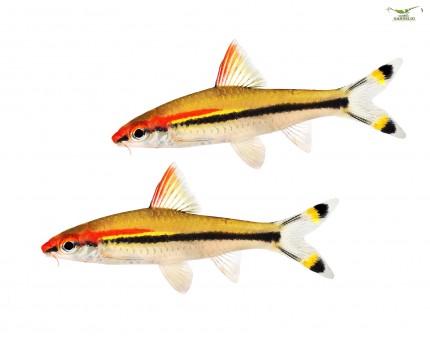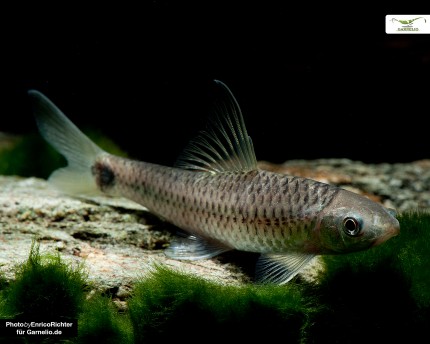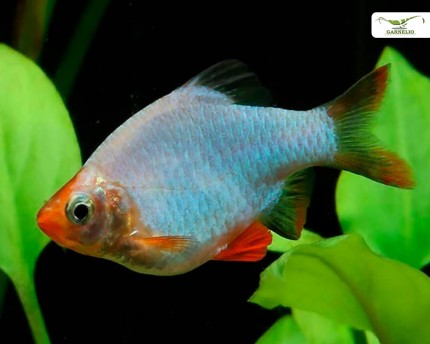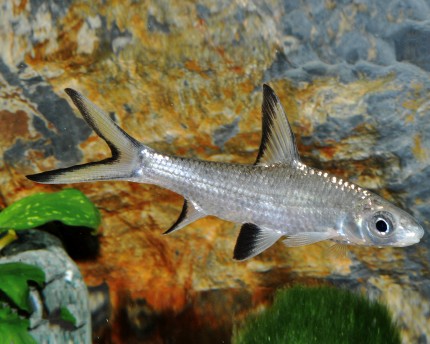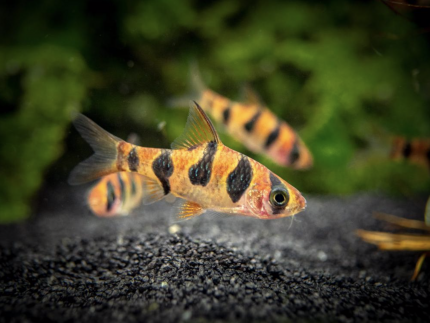Barbels in nature
Barbels are gregarious freshwater fish and belong to the carp family. They are found almost all over the world, including Europe. However, the barbs that are common in aquaristics originate mainly from Southeast Asia.
Barbs in the aquarium
Many of the barbs relevant in aquaristics are laterally compressed and rather high-backed. In many species, the scales are very large and easily recognizable - with their rather large fins and conspicuous scales, they look like the ideal typical fish we have imagined since childhood. The sucker barbs, nibblers, and algae eaters, on the other hand, are more elongated and have a flat underside as an adaptation to their bottom-dwelling, algae-eating lifestyle. Basically, the high-backed barbs tend to be more at home in the middle layers of water, while the algae eaters tend to be more at the bottom of the aquarium.
Barbs are sociable fish that must always be kept in schools of 7-10 or more. With the different colors of the Sumatra barb you can for example socialize the different colorful fishes well together and have then a colorful, but still species-appropriate aquarium stock. Barbs can interact quite rough from the social behavior and should therefore not be kept together with shy, long-finned, thread-finned or very small fish. Their lively, playful behavior and lively, scurrying swim makes them great eye-catchers, and their relative lack of demands and adaptability makes them good beginner fish. They should always find a sufficiently large aquarium, so that they can live out their joy of movement.
Many barbs are omnivores and usually hunt small crustaceans in the wild; socialization with shrimp does not work so well. However, the non-bottom-dwelling species go well with crayfish. Please read the article descriptions and here especially our notes on socialization well.
The aquarium for barbs should have sufficient swimming space. Planting with not too fine-leaved plants is possible, although some barb species tug at soft-leaved plants.
Feeding of barbs in the aquarium
among the barbs there are omnivores as well as pure herbivores. In the article descriptions we list exactly which species of barb in the aquarium should be fed best and how.
Breeding barbs
breeding barbs is easy to quite tricky, depending on the species. In principle, the fish are free spawners that simply lay their eggs after mating and do not bother with them afterwards. The parents are also strong spawn predators, so they should be caught again quite quickly from the rearing tank once they have spawned - the yield of young fish is greater this way. A thick layer of preferably coarse pebbles, glass marbles or similar, or even a spawning grid can also be very helpful here to keep the spawn out of the reach of the adult fish. Once the fish larvae have hatched, they can be quickly grown with fine live food such as microworms and Artemia.
Conclusion
from shy to extremely lively, from gruff to useful, from colorful to monochromatic, from vegetarians to hunters - the aquarium barbs are a very diverse bunch. With them it will never be boring in the aquarium! Here in Garnelio's store you can buy traditional, often kept barbs, but we also carry the rare species and also such desirable fish as the nibbler fish or the useful algae eaters, which do not even stop at the annoying brush algae. These lively, usually quite adaptable and not very demanding fellows are a great enrichment for a freshwater aquarium with equally lively and assertive fish.

